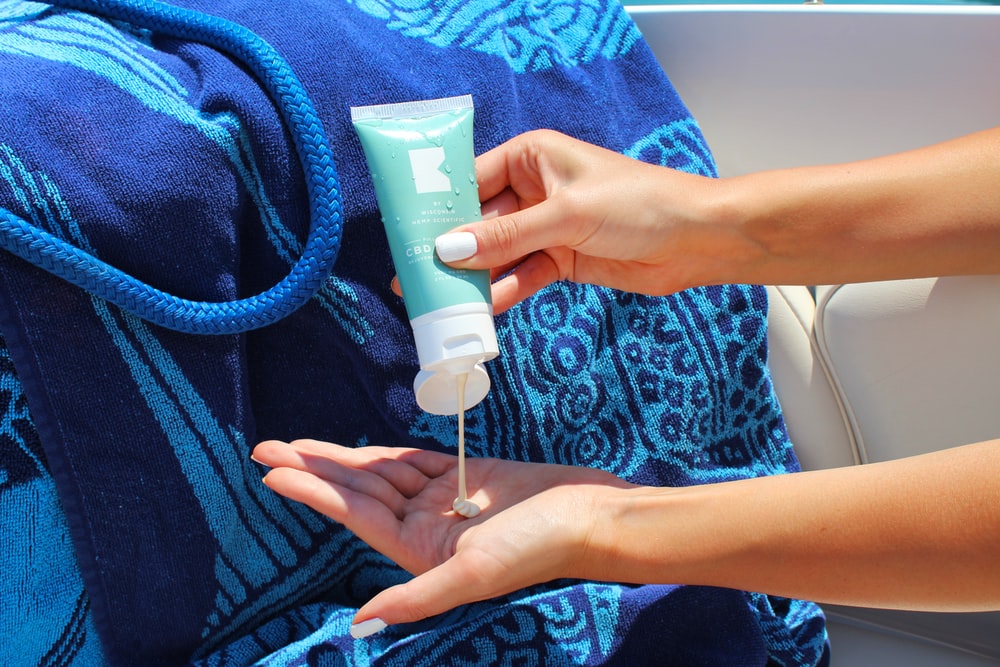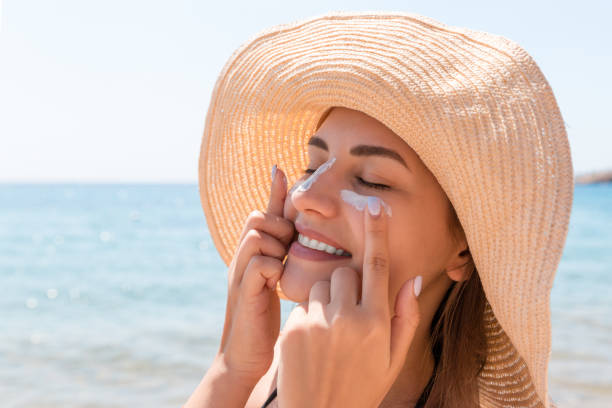
While going out in the sun can be soothing for a shorter duration, prolonged exposure to harmful ultraviolet radiation is detrimental for the skin. The UV rays induce photodamage of the skin, characterized by increased production of free radicals or reactive oxygen species. Free radicals are responsible for increased oxidative stress, thus, accelerating the aging of the skin. Sunscreens are an essential skin care product that protects an individual’s skin from photodamage as well as modulates the aging of the skin. Organic sunscreens refer to those sunscreens that include carbon-based ingredients while mineral-based ingredients replace these in inorganic, or mineral, sunscreens. The following section discusses the two types of sunscreens – mineral and chemical sunscreens, and their merits and demerits.
Chemical Sunscreens
- Composition of Chemical Sunscreens
Chemical sunscreens, also known as organic sunscreens, act as UV filters and prevent the UV rays from penetrating the skin. Chemical sunscreens protect the skin by absorbing the UV rays as well as converting UV energy to heat energy that is dissipated into the environment. This minimizes the penetration depth of UV rays. The active ingredients responsible for absorbing UV rays are aromatic compounds that are associated with a carbonyl group. These ingredients include the following.
- Oxybenzone
- Avobenzone
- Octisalate
- Octocrylene
- Homosalate
- Octinoxate
The chemical sunscreens are classified based on the range of UV radiations. UVB sunscreens are effective against UV wavelengths of 290-320 nm whereas UVA sunscreens protect against 320-400 nm UV radiations. Broad-spectrum UV filters or sunscreens provide UV protection against a complete spectrum of wavelengths that is 290-400 nm.

- What Are The Benefits Of Chemical Sunscreens?
The following are the benefits of using chemical or organic sunscreens:
- Chemical sunscreens can be easily rubbed into the skin and absorb faster than other sunscreens.
- Since chemical sunscreens have an absorptive function, the formulation does not remain on the skin. Thus, these sunscreens do not form a characteristic white film over the skin surface.
- Chemical sunscreens demonstrate greater effectiveness towards photoprotection of skin. These sunscreens provide longer UV protection as compared to other sunscreens.
- Chemical sunscreens are both water and sweat-resistant. Hence, these sunscreens can be worn by those individuals who have an active lifestyle.
- These sunscreens minimize the risk of skin cancers.

- What Are The Cons Of Chemical Sunscreens?
A randomized controlled trial reported in 2019 described four sunscreen ingredients that invade the systemic circulation and may have adverse effects on the body. Three of these ingredients are mentioned in the list above – oxybenzone, avobenzone, and octocrylene. This makes the safety and effectiveness of chemical sunscreens a questionable topic. Apart from these, other disadvantages of chemical sunscreens are listed below:
- Chemical sunscreens may elicit allergic reactions in susceptible individuals.
- Skin conditions such as melasma and rosacea may become exacerbated upon the use of chemical sunscreens.
- Active ingredients of chemical sunscreens are responsible for causing endocrine abnormalities in an individual. These ingredients are oxybenzone, homosalate, and octocrylene.
- Octocrylene in SPF is a benzophenone generator. This acts as a carcinogen present in the systemic circulation and predisposes an individual to an increased risk of cancer.
- Chemical sunscreens require about 20 minutes to absorb into the skin and demonstrate photoprotective effects.
Mineral Sunscreens
- Composition Of Mineral Sunscreens
Mineral sunscreens, also called inorganic sunscreens, act as UV shields. Mineral sunscreens contain zinc oxide and titanium dioxide. The safety and effectiveness of these ingredients are approved by the US Food and Drug Administration (FDA). Mineral sunscreens work by scattering and reflecting the UV rays of the sun. Mineral or physical sunscreens do not penetrate the skin given the concentration found in SPF. These sunscreens provide UV protection and minimize photodamage of the skin.
- What Are The Pros Of Mineral Sunscreens?
The benefits of mineral sunscreens are as follows:
- Since the sunscreens do not penetrate the skin, they are safe for people who have sensitive skin. Moreover, these sunscreens do not elicit allergic reactions, a common adverse effect of chemical sunscreens.
- While chemical sunscreens require some time to absorb into the skin and demonstrate protective effects, mineral sunscreens work immediately after applying them.
- Mineral sunscreens do not aggravate skin conditions including acne.
- Mineral sunscreens protect the complete spectrum of UV rays wavelengths.

- When Can Mineral Sunscreens Be Harmful?
Mineral sunscreens of SPF 30 or more, tend to be safe for both children and adults. However certain chemical ingredients may be harmful if they gain access to the systemic circulation. The following are the cons of mineral sunscreens:
- Mineral sunscreens leave a white film or residue over the skin.
- Titanium dioxide of the mineral sunscreen is a potential carcinogen when inhaled. This disrupts the hormonal imbalance and increases the risk for cancer.
Conclusion
UV radiation plays havoc with skin integrity and physiology. Mineral and chemical sunscreens with SPF 30 or greater provide significant UV protection against solar radiation. These sunscreens differ in chemical composition and mechanism of action. Mineral sunscreens act as physical barriers between skin and UV rays. They demonstrate safety and effectiveness concerning sensitive and acne-prone skin. By contrast, chemical sunscreens provide relatively greater UV protection by penetrating the skin tissue. However, these sunscreens have been associated with adverse systemic effects and skin allergies.
